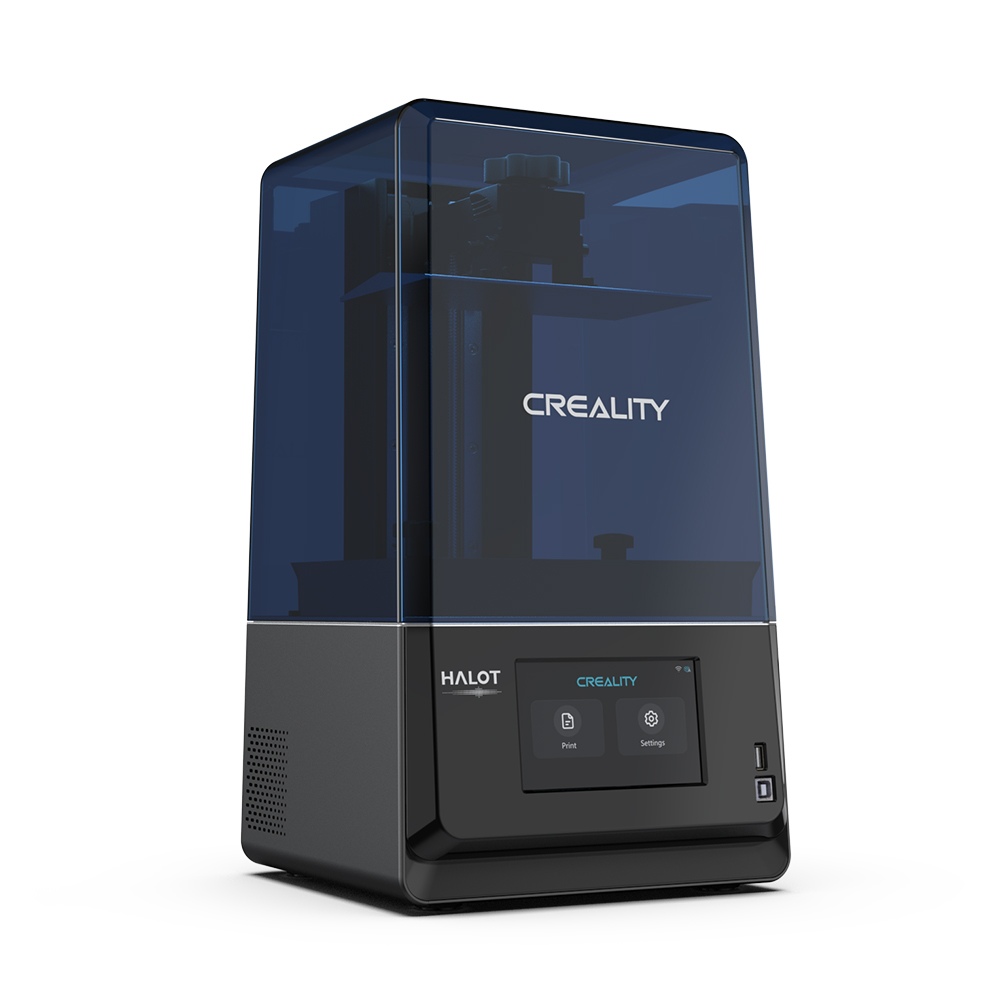Compare Comgrow T300 vs Halot One Plus
Comparison between the best 3D printers
Choose the best 3D printer at the best price. The cheapest 3D printers are here.
Buy a 3D printer here with 3D Fila.
 |
 |
|
| Model | Comgrow T300 |
Halot One Plus[BUY Halot One Plus] |
| Printing Material | Filament | Resin |
| Buy Filament for Sovol Comgrow T300 | Buy Resin forCreality 3D Halot One Plus | |
| Estimated price | $449,00 | $399,00 |
| Manufacturer | Sovol | Creality 3D |
| Release Year | 2024 | 2022 |
| Print Volume [mm] | 300x300x350 | 102x172x160 |
| Printer Size [mm] | 503x631x831 | 236x245x416 |
| Weight [kg] | 17 | 6,8 |
| Power Loss Recovery | YES | NO |
| Maximum Resolution [mm] | 0,1 | |
| Processor | 64 bit | |
| Display | Touchscreen 5'' | |
| Power Supply | 150 W | |
| Connectivity | USB, WiFi | USB / Wi-Fi |
| Operating systems | Windows, Linux, Macbook | |
| Date of registration in the system | 2024-05-10 | 2022-10-11 |
| Release date | 2024 | 2022 |
| Extra features | The Sovol Comgrow T300 printer stands out for its technological innovations and advanced features. With a print size of 300mm300mm350mm, the T300 offers true linear rails on all axes, ensuring greater stability. Its Klipper-based intelligent core and 64-bit microcomputer increase printing speed and quality through pressure advancement and input shaping. The extruder with a gear ratio of 6.5:1 allows for more precise material control, optimizing the printing of flexible materials. In addition, the T300 features a rapid filament cooling system with a high-speed fan and a circular duct piece that improves cooling efficiency. With a 4.3-inch high-refresh rate touchscreen and an 81-point automatic leveling system, the T300 simplifies the preparation and execution of 3D prints. | Crealitys Halot-One Plus printer stands out for its 4K+ resolution that delivers sharp details and consistent surfaces. It features a fast and responsive 5-inch LCD interface, as well as easy-to-use Halot Box software. It offers Wi-Fi connectivity and remote print monitoring, as well as an integrated air filtration unit, a rare feature in this price range. The Halot-One Plus is designed for the prosumer market, combining high quality with advanced features such as Wi-Fi and air filtration. During testing, it stood out for implementing these features at an affordable cost, while maintaining functionality. It features an attractive design with a UV-resistant blue cover and a robust dual rail system for the Z-axis, ensuring smooth and consistent movements. The large LCD and high resolution of the LCD mask (4320 x 2560) are other strong points, allowing for fine details and textures in prints. |
| Support for multiple colors and materials (AMS and CFS) | NO | NO |
Notes * |
||
| Cost-benefit | 8 / 10 | 8 / 10 |
| Hardware | 3.6 / 10 | 1.4 / 10 |
| Tela | . | . |
| Print volume | 4 / 10 | 3 / 10 |
| Performance | 5 / 10 | 9 / 10 |
| [BUY Halot One Plus] |
Conclusion |
| In comparing the Sovol Comgrow T300 and the Creality 3D Halot One Plus, both printers have unique strengths that cater to different user needs and preferences. The Comgrow T300 stands out with its impressive print volume and advanced technological features, allowing for greater flexibility in print size and material control. Its robust construction, including linear rails and a Klipper-based intelligent core, enhances precision, speed, and overall print quality. This model is ideal for users seeking to tackle larger projects or those requiring the ability to work with flexible filaments. Additionally, features like power loss recovery and an advanced automatic leveling system add significant value for both beginners and experienced users. On the other hand, the Halot One Plus is tailored for those who prioritize high-resolution output and ease of use. With its 4K+ resolution, it excels in delivering detailed prints, making it suitable for applications that demand fine details and high-quality finishes. The convenience of its integrated air filtration, Wi-Fi connectivity, and user-friendly software enhances its appeal, especially for prosumers looking for an efficient, hassle-free experience. Considering the price differences, the choice ultimately boils down to the intended use. If a larger build volume and advanced features for multi-material handling are essential, the T300 is a compelling option despite its higher price point. Conversely, for those primarily focused on high-resolution prints and ease of operation at a more budget-friendly price, the Halot One Plus offers excellent value and performance without sacrificing quality. In conclusion, while both printers have their merits and can be rated similarly in terms of overall cost-benefit and performance, the decision should be based on specific needs—whether one prioritizes larger scale projects or high-resolution print quality. |

